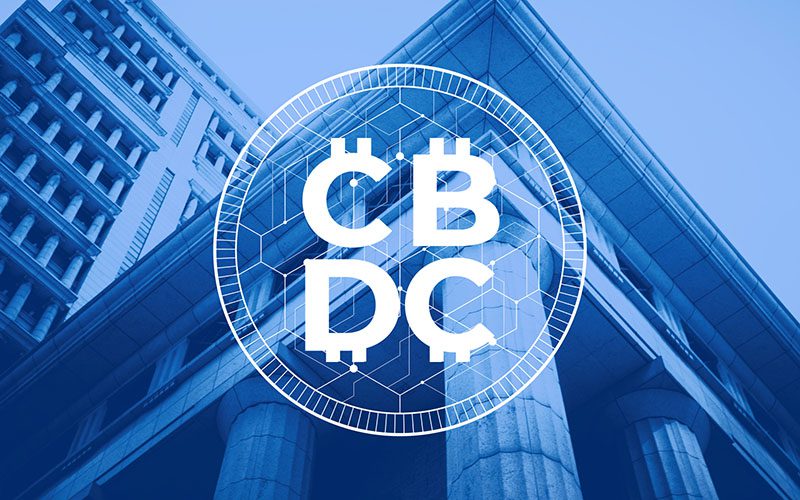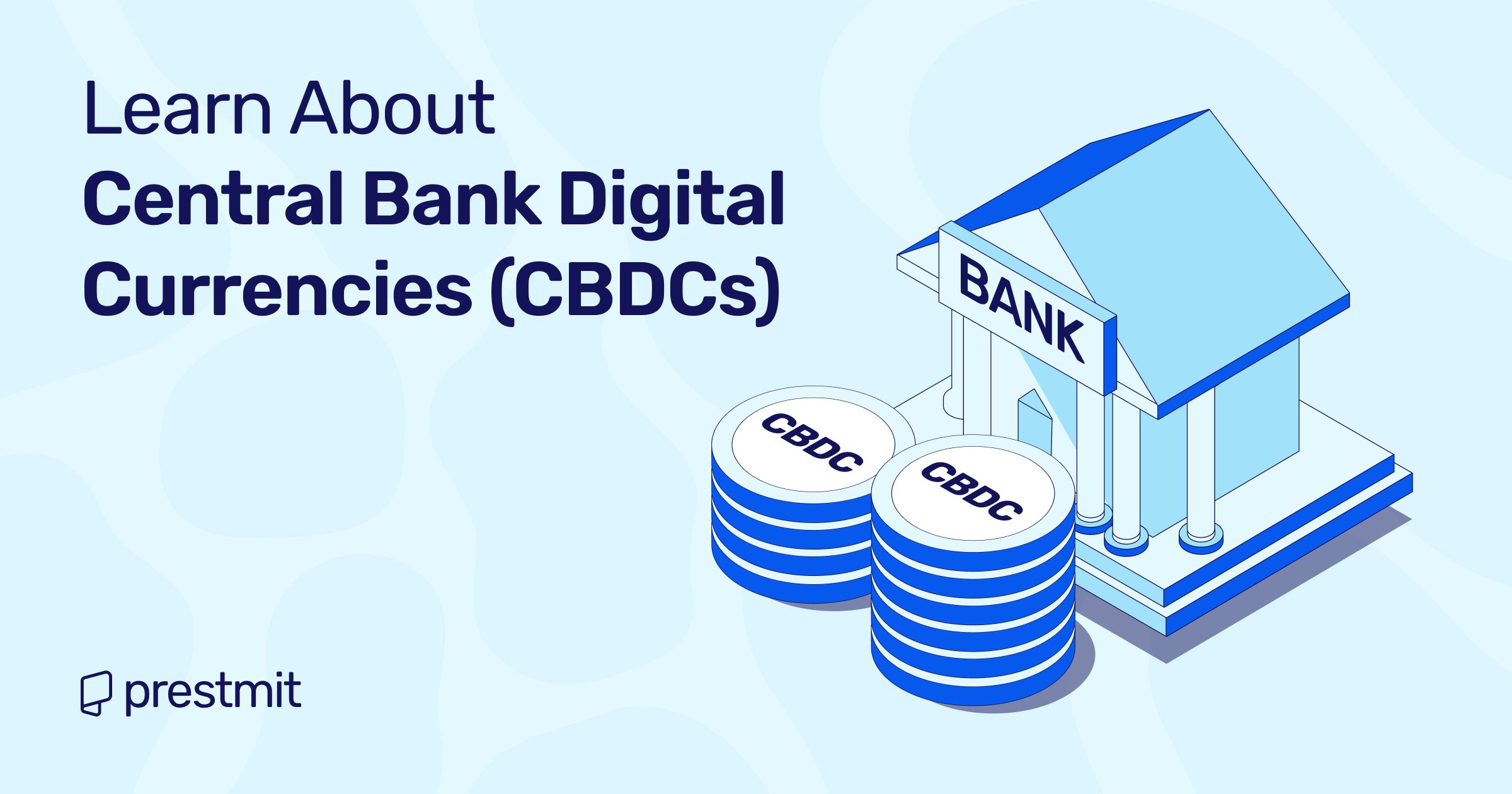Table of Contents
Money has changed a lot over generations. From shells and metal coins to paper notes and cards, people have always adapted new forms of currency to make trade easier. Today, many countries are exploring a new form of government-issued money: a Central Bank Digital Currency, commonly known as a CBDC.
CBDCs promise faster payments, improved access to financial services, and better tracking of money flows, but they also raise questions about privacy, technology, and the future role of banks.
In this article, we’ll take a look at what CBDCs are, why Central Banks are developing it, types of CBDC, how it works, and more.
What is a Central Bank Digital Currency (CBDC)?

A Central Bank Digital Currency is a digital version of a nation’s official money. It is issued, backed, and regulated by a country’s central bank, just like physical cash but it exists only in digital form. It is designed to work on computers, phones, and digital wallets instead of in paper or coin form. CBDCs are meant to be legal tender, meaning people can use them to buy goods, pay bills, send money to family, or settle transactions just like they would with physical currency.
Unlike commercial bank accounts, where your money is guaranteed by the bank you use, a CBDC is backed directly by the central bank the same institution that prints your country’s currency. This reduces credit and liquidity risks because it is not dependent on a private bank’s financial health.
CBDCs can be transferred instantly and used for online payments without the delays of traditional banking infrastructure. They are also designed to be secure, efficient, and accessible to a wide range of users, including people who are currently unbanked or underbanked.
Why Are Central Banks Developing CBDCs?
1. Decline in cash usage and digital payments
The use of physical cash has decreased significantly in many countries. People now prefer digital payments through cards, mobile wallets, or online transfers. Central banks want to ensure their currencies remain relevant and widely used in a digital economy.
2. Faster, cheaper, and more efficient payments
CBDCs can speed up payment systems, reduce transaction costs, and allow 24/7 transfers without intermediaries. This is especially helpful for cross-border payments, which are often slow and expensive through traditional banking channels.
3. Financial inclusion
Many people around the world don’t have access to bank accounts. A CBDC could bring digital access to financial tools without requiring users to open bank accounts, reducing barriers caused by fees or geographic limitations.
4. Strengthening monetary policy tools
CBDCs give central banks direct insight into money flows. This could help them influence the economy more quickly and precisely than with traditional policy tools like interest rates or reserve requirements.
5. Competition from other digital assets
The rise of private digital payment systems and cryptocurrencies has shown central banks that digital forms of money are increasingly important. CBDCs help maintain public trust in official currencies, especially as private digital assets grow.
What Are the Types of CBDCs?
1. Retail CBDCs
Retail CBDCs are designed for everyday use by individuals and businesses, similar to how people use cash or bank deposits today. They make digital payments easier and available directly to the public without requiring a commercial bank account.
2. Wholesale CBDCs
Wholesale CBDCs are used only by financial institutions, central banks, and banks for transactions like interbank settlements, clearing, or liquidity management. This model does not directly involve everyday consumers but improves the efficiency and security of the financial system.
How Does a CBDC Work?
1. Issuance and distribution
A central bank issues the digital currency and can distribute it directly or through intermediaries, such as commercial banks or regulated financial institutions. Users may hold CBDC in digital wallets provided by banks, payment apps, or national platforms.
2. Digital wallets and transactions
Individuals and businesses hold CBDC in digital wallets. Payments are made by transferring value from one wallet to another. These transactions are recorded on a secure ledger that the central bank or trusted system maintains.
3. Settlement and recording
When a transaction occurs, the ledger updates in real time, confirming the transfer of digital currency from one party to another. This process can be faster and more efficient than traditional bank clearing systems.
4. Security and monitoring
Central banks use advanced security measures like cryptography and continuous monitoring to protect the CBDC system from fraud and cyberattacks. They may also balance privacy and oversight to prevent illegal activities.
Benefits of Central Bank Digital Currency
1. Improved financial inclusion
CBDCs could help people without traditional bank accounts participate in the digital economy by providing an official digital payment system that does not require opening a bank account.
2. Faster, cheaper payments
Domestic and cross-border transactions could become quicker and more affordable, benefiting businesses and individuals alike.
3. Reduced costs of cash management
Printing, transporting, and securing physical cash is expensive. CBDCs would reduce many of these costs.
4. Enhanced monetary policy tools
Central banks could monitor economic activity more directly and implement policy changes more efficiently. This could help stabilize economies during downturns or shocks.
5. Improved transparency and fraud reduction
A digital system can reduce fraud and illicit financial activity because transactions are traceable and recorded securely.
Potential Risks Associated with CBDCs
1. Privacy concerns
Digital transactions may be visible to central banks and possibly other authorities, raising fears about personal financial privacy. Protecting individual data while preventing misuse could be difficult.
2. Cybersecurity threats
CBDCs are digital systems, and like all digital platforms, they could be targets for cyberattacks. Ensuring robust security over millions of users is a complex and ongoing challenge.
3. Impact on commercial banks
If people prefer holding CBDCs over bank deposits because they view them as safer, commercial banks could lose a key source of funding. This might reduce banks’ ability to lend and support economic activity.
4. Implementation complexity and cost
Setting up a CBDC involves upgrading financial infrastructure, building digital wallet systems, and ensuring compatibility with existing payment networks. This can be expensive and time-consuming.
CBDC vs Cash: Will CBDCs Replace Physical Money?
One of the biggest questions surrounding CBDCs is whether it will replace cash entirely. Technically, a CBDC could serve the same purposes as cash, acting as legal tender and a widely accepted payment method. However, whether this happens depends on policy decisions, public acceptance, and cultural preferences.
In many countries, central banks have said they will keep cash alongside digital currencies to preserve privacy and choice. For example, while the European Union is advancing its digital euro project with pilots expected around 2027 and potential rollout by 2029, officials have emphasised that cash will continue alongside the digital euro for the foreseeable future. In other countries, especially where cash usage is already low, CBDCs could become dominant over time.
Frequently Asked Questions (FAQs) About Central Bank Digital Currency (CBDC)?
1. Are CBDCs the same as cryptocurrencies?
No. CBDCs are backed and controlled by a central bank, while cryptocurrencies are typically decentralized and not issued by any government. This is a fundamental difference between CBDC and cryptocurrency.
2. How soon will CBDCs be implemented?
CBDC implementation timelines vary by country. Some nations are in pilot phases, others are researching detailed designs, and a few have already launched national CBDCs. For example, the digital euro aims for pilot testing around 2027 and wider rollout by 2029.
3. Will CBDCs replace banks?
Not necessarily. Most designs involve banks continuing to play roles in distribution and customer services while CBDCs provide a foundational digital currency layer.
4. Can I use a CBDC without a bank account?
That depends on the country’s design. Some CBDCs aim to allow people to hold digital wallets without traditional bank accounts to increase financial inclusion.
5. Are CBDCs secure?
Central banks plan to use advanced security measures to protect CBDCs, but digital systems always require ongoing work to defend against cyber threats.
Conclusion
A Central Bank Digital Currency is an important evolution in the way money works in a digital age. By combining the stability of government-backed currency with the speed and convenience of digital systems, CBDCs could make payments faster, more inclusive, and more efficient. However, significant questions remain around privacy, technology risks, and the future role of traditional banks. How do central bank digital currencies work and whether they will replace cash depends on policy choices, technological readiness, and public acceptance. As nations continue to explore, pilot, and develop digital currencies, the next decade is likely to be a defining period in the world of money and finance.
Last updated on December 27, 2025

